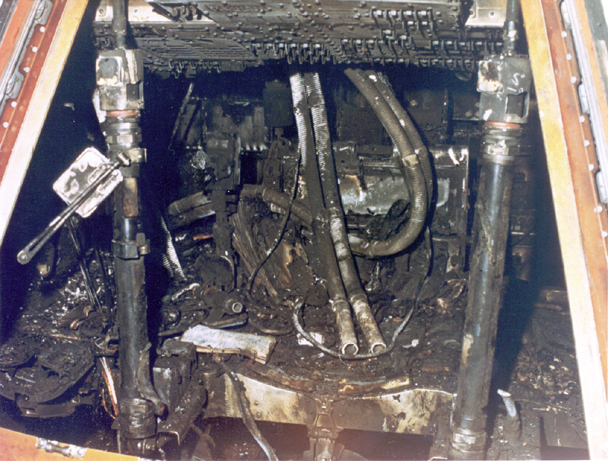Space History Photo: Apollo 1 Fire

In this historic photo from the U.S. space agency, this close-up view of the interior of the Command Module of the officially designated Apollo/Saturn 204, but more commonly known as Apollo 1, shows the effects of the intense heat of the flash fire which killed the prime crew during a routine training exercise.
While strapped into their seats inside the Command Module atop the Saturn IB rocket, a faulty electrical switch created a spark which ignited the pure oxygen environment. The speed and intensity of the fire quickly exhausted the oxygen supply inside the crew cabin.
Unable to deploy the hatch due to its cumbersome design and lack of breathable oxygen, the crew lost consciousness and perished. They were: astronauts Virgil I. "Gus" Grissom, (the second American to fly into space) Edward H. White II, (the first American to "walk" in space) and Roger B. Chaffee, (a "rookie" on his first space mission).
Each weekday, SPACE.com looks back at the history of spaceflight through photos (archive).
Get the Space.com Newsletter
Breaking space news, the latest updates on rocket launches, skywatching events and more!
Join our Space Forums to keep talking space on the latest missions, night sky and more! And if you have a news tip, correction or comment, let us know at: community@space.com.

The National Aeronautics and Space Administration (NASA) is the U.S. government agency in charge of the civilian space program as well as aeronautics and aerospace research. Founded in 1958, NASA is a civilian space agency aimed at exploring the universe with space telescopes, satellites, robotic spacecraft, astronauts and more. The space agency has 10 major centers based across the U.S. and launches robotic and crewed missions from the Kennedy Space Center in Cape Canaveral Florida. It's astronaut corps is based at the Johnson Space Center in Houston. To follow NASA's latest mission, follow the space agency on Twitter or any other social channel, of visit: nasa.gov.









